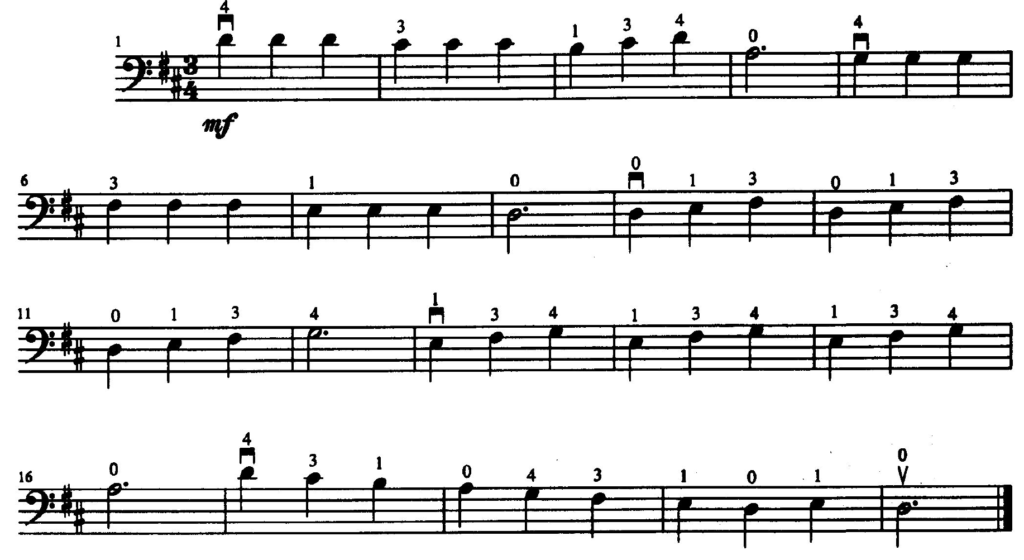Merci Beaucoup!
After ages of Twinkle Twinkle Little Star it is such a joy to play the elegant, lyric French Folk Song. No more stopped bows or repetitive variations. You finally get to seep deep into the instrument and pull your best singing tone out of the cello. If you have already learned the D major one octave scale and Schroeder No. 4 then this piece is especially enjoyable to play. I highly recommend you also review the video lesson on the natural bow stroke because you will need that open-open; close-close bow stroke to get the legato sound required for lyrical French Folk Song.
This video lesson isolates the left and the right hand cello technique required for French Folk Song. The left hand is straightforward. I want to emphasize the healthy habit of placing all 4 fingers on the string in position and then peeling them off one at a time. I call this left hand technique the “catapult” it is explained in a previous lesson, here.

The right hand technique of French Folk Song is very different than Twinkle Twinkle Little Star. But if you have been working on the scales and Schroeder exercises then this legato tone is already well known to you. The trick is to pace the bow on the dotted-half notes, especially the up bows.
Pro Tip
Simple can be beautiful. A well-known cellist asked to have French Folk Song played as she walked down the aisle at her wedding. Even though this may be the second piece you’ve ever played on the cello — MAKE IT BEAUTIFUL!
As you prepare to play French Folk Song, make sure that your posture is setting you up for success down the road. Here is a handy posture checklist:
- Posture – feet flat on the floor, cello between your knees, touching at your sternum, sitting straight up, shoulders relaxed, elbow out like a kickstand, straight EWP (elbow-wrist-pinkie)
- Left hand – thumb and fingers bent (making a “C”), fingers arched and contacting the string with the pad of the fingertip, thumb bent and under 2nd finger
- Bow path – bow travels straight across the string (t-bow), midway between the fingerboard and the bridge (forte-freeway)
- Bow hand – thumb slightly bent, index finger touching the stick between the first and second knuckle, hand pronated, fingers slightly apart — not overly spread or bunched together
- Keep fingers down as you play – as you ascend the string don’t lift the finger you just played when you place the new finger. As you descend place all 4 fingers and then peel off the fingers one by one.
- Check intonation – verify your intonation. Play with the video, use a tuner, watch your hand in a mirror to check that you are on the tapes. Don’t assume, verify.
